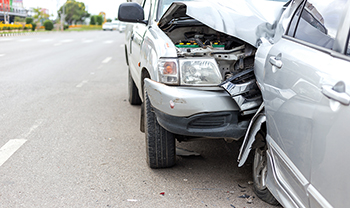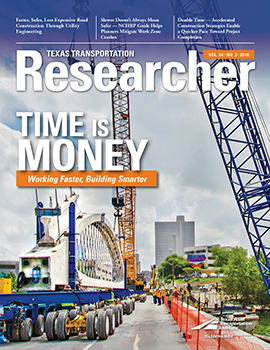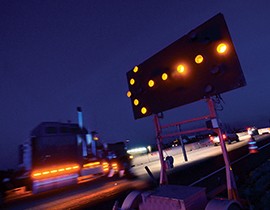Roadways don’t build themselves. They require careful planning, construction and regular maintenance, all of which require work zones designed to keep both workers and travelers safe.
Sometimes those measures fail. According to the Texas Department of Transportation (TxDOT), in 2017, there were 27,148 work zone crashes in Texas. Of those, 199 were fatalities, and 813 resulted in serious injuries. TxDOT and other state and national agencies responsible for building and maintaining our transportation system are consistently looking for ways to decrease those numbers.

Consider the concept of accelerated construction — building the system faster, smarter and with a goal to make it last longer — in the context of safety. One might think that doing things faster inherently means doing them less safely, but Texas A&M Transportation Institute (TTI) Senior Research Engineer Jerry Ullman looks at it a different way.
“Reducing the duration of the project is a big safety win, actually,” says Ullman, manager of TTI’s Work Zone and Dynamic Signs Program. “Each additional day a work zone exists increases the chance of a crash occurring in it.”
Ullman and his team recently completed National Cooperative Highway Research Program (NCHRP) Project 17-61, Analysis of Work Zone Crash Characteristics and Countermeasures. TTI performed an in-depth analysis of crash narratives to better understand why crashes occur in work zones.
“It was no surprise to anyone that rear-end collisions and sideswipes with another vehicle or barrier are the most common types of crashes due to slow-downs and the congestion that naturally occurs during construction,” Ullman says. “Driver confusion upon approaching a work zone, as well as work vehicles entering and exiting the area are also significant factors.”
The advent of intelligent transportation systems offers solutions to some of the issues uncovered by analyzing the crash narratives. For example, TTI led the deployment of an end-of-queue warning system as part of its support for TxDOT during the I-35 Reconstruction Project. Since 2011, the 96-mile widening and safety improvement effort between Hillsboro and Salado, Texas, has spanned a multitude of work zones that, literally, see hundreds of thousands of cars a day pass through them. Deploying the end-of-queue warning system upstream of a work zone — and warning travelers of slow-downs before they happen — has helped reduce crashes by up to 55 percent. Other options, like rumble strips, can also alert drivers to upcoming safety hazards.
“Mitigating the interactions between the traveling public and work vehicles entering and exiting the work space is also important,” Ullman explains. “Designing access points to allow work vehicle/equipment deceleration and acceleration out of the main travel lanes before entering or exiting a work area can reduce conflicts and crashes, as can the use of technology to warn approaching motorists of slower moving construction vehicles and equipment when they are actually present.”
As part of the NCHRP project, researchers developed Estimating the Safety Effects of Work Zone Characteristics and Countermeasures: A Guidebook. The guidebook assists traffic planners developing phasing and staging plans for temporary traffic control through work zones to better evaluate the expected safety impacts of their plans. Those stages are crucial to successful accelerated-construction efforts, and maximizing safety when planning them is just as vital.
“NCHRP’s guidebook helps planners understand the safety implications of alternative work zone designs under consideration,” Ullman says. “It also provides information on how effective the various crash mitigation strategies are at saving lives.”
As we look for ways to improve our transportation system — to make it faster, less expensive to build and longer lasting — improving safety is always of paramount importance. That emphasis has to start with the work zones themselves, before a single square foot of asphalt is ever laid down.

